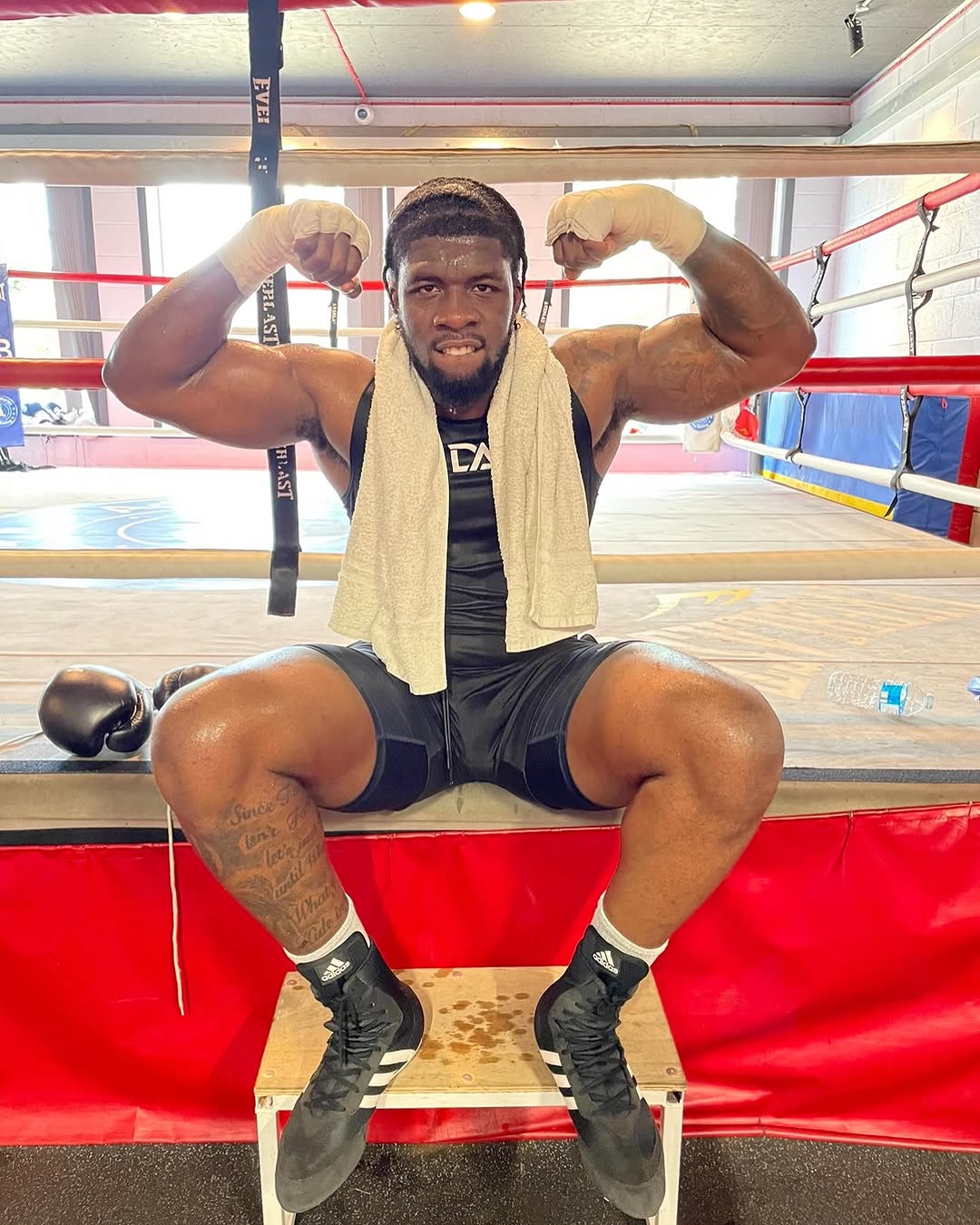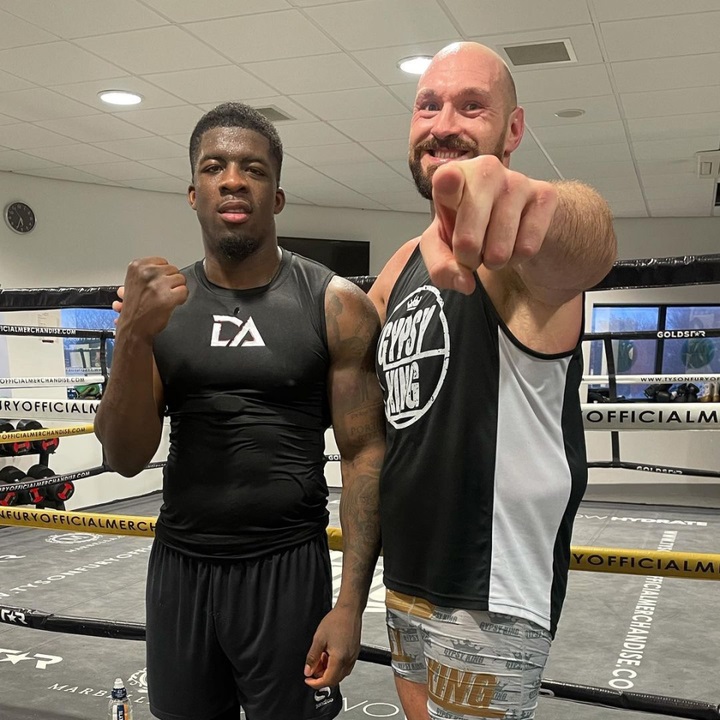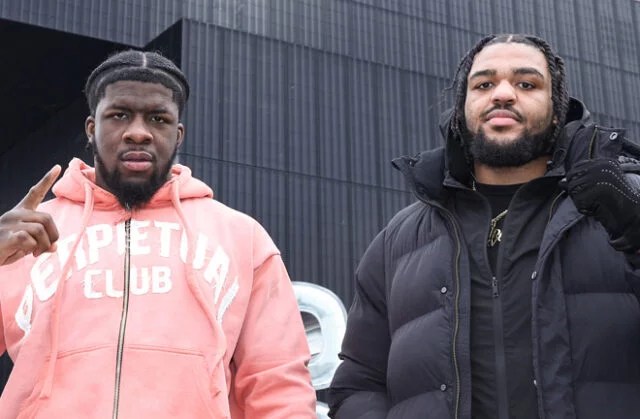
Jesus Christ, I've been following this kid's career since 2019, and I still can't believe he almost ended up designing buildings instead of demolishing opponents. Funny how life works out sometimes.
David Adeleye first laced up boxing gloves when he was just 12 - a skinny kid with no idea he'd eventually become Tyson Fury's go-to sparring partner. But here's the kicker: he didn't even take it seriously until he was 15. Three wasted years! (Though who among us didn't waste our early teens on stupid shit?)
The Architect Who Chose Violence
I interviewed Adeleye back in 2022 at a sweaty gym in East London. The 28-year-old heavyweight told me something that stuck with me: "I wanted to be an architect when I was younger. I look at buildings and I'm intrigued about how they're made, who made it, who came up with the ideas."
He leaned against the ropes, still breathing hard from his workout. "You've got to have some sort of adventurous mind to be an architect. I think I'm an adventurous person and a creative person."

Adventurous is one way to put it. Another way? The man enjoys punching other large men in the face for a living.
Wait... Fury let him DRIVE HIS CAR?!
Adeleye became such a fixture in Fury's Morecambe training camp that the Gypsy King actually put him on the insurance for one of his vehicles. I mean, that's trust. I wouldn't let most of my actual friends drive my beat-up 2011 Honda, let alone a luxury whip worth more than my annual salary.
Fury clearly saw something special in him.
"David Adeleye is the future of this division," Fury once declared after a particularly brutal sparring session. "I told him the other night in teh changing rooms, 'You've got believe in yourself Dave, because you're going to take over the division, mate.'"

The Devastating Setback Nobody Talks About
October 2023. I was ringside when it happened.
Wardley caught him with a shot that would've dropped a rhinoceros. Adeleye's first professional loss came in the form of a knockout that had the crowd gasping. It was brutal, uncomfortable to watch. The kind of loss that ends careers.
But it didn't.
Ten months later (which felt like an eternity in boxing years), Adeleye returned with a vengeance. Solomon Dacres lasted exactly one round before finding himself staring at the ceiling lights. Comeback complete.

Smart as Hell (No, Seriously)
This might shock you - it certainly surprised me when I found out in 2021 - but Adeleye isn't just another meathead with fast hands. The man graduated from the University of Wolverhampton with a business management degree. He even wrote his dissertation on the business aspects of boxing.
How many fighters do you know who could explain both the biomechanics of a perfect uppercut AND the economic structure of promotion contracts? Not many.
I asked him if he'd ever return to his architectural dreams. He shrugged. "I still kind of want to do it, maybe. One of my teachers disheartened me by telling me how long the course was at university and it was a long process and whatnot. Maybe one day, you never know."
The Blood Feud You Didn't Know About
Poor Jeamie TKV. I spent $120 on ringside seats to watch these former sparring partners settle what's become a genuinely nasty rivalry.
When I spoke to Adeleye last week about the upcoming fight, he didn't mince words: "No judges needed. That W's coming home with me and so is the British title. When I let these hands go, everyone knows about it. I'm an aggressive person. They're all going to know about it. Trust me."
Twelve knockouts in thirteen wins. The man isn't bluffing.
The fight goes down in Manchester on Joe Joyce's undercard against Filip Hrgovic. My money's on Adeleye finishing it within four rounds. And I'm not just saying that because he intimidates the hell out of me.
From almost-architect to heavyweight contender with knockout power that makes even Tyson Fury raise an eyebrow. Life's weird, adn boxing's even weirder.
Frequently Asked Questions
How can I find the best size and type for my boxing gloves?
The type and size of boxing gloves you need will depend on how much you weigh, your level of protection, and what you plan to do (e.g. sparring, competition, or heavy bag work). Gloves come in ounces. Beginners often begin with gloves that are 12oz and 14oz for general training, then move up to heavier gloves when sparring.
What is the proper stance in boxing?
The classic boxing posture involves standing with your legs shoulder-width apart. Your lead foot should be forward and your rear foot should be at a angle of 45 degrees. The weight of your body should be evenly distributed between your toes and knees. Your hands should be raised to protect your face. Keep your elbows tucked into your torso to protect it.
What is the best way to learn boxing for beginners?
For beginners, sparring isn't necessary. You should consider it only after you have established a strong foundation in the fundamentals and reached a high level of fitness. To ensure safety and a productive learning experience, sparring should be done under the supervision of an instructor and wearing proper protective gear.
What equipment is required to begin boxing?
For safety and to ensure effective training, you need the right equipment. This includes a pair of boxing gloves, hand wraps to protect your wrists and hands, a mouthguard, and headgear if sparring. Additionally, boxing shoes and comfortable athletic clothing are recommended for better movement and support.
How do I wrap up my hands before boxing?
Hand wrapping is crucial in boxing to protect your hands and wrists from injury. Start by unwinding wraps. Place the thumb loop around the middle of your thumb. Wrap the wrap over the palm and wrist. Then, wrap the Velcro-fastened wrap around your arm.
Statistics
- Approximately 80% of boxing injuries occur during training, not in actual competition.
- An analysis of boxing workouts demonstrates that participants can maintain a heart rate at 75-85% of their maximum, which is the optimal range for cardiovascular training.
- About 25% of people who take up boxing transition to competitive amateur boxing within their first two years of training.
- Beginner boxers tend to make the mistake of holding their breath in 70% of cases during their initial training sessions.
- Despite the stereotype that boxing is a young person's sport, approximately 20% of all beginners are over the age of 40.
- Boxing has one of the lowest rates of injury compared to other contact sports, with approximately 1.1 injuries per 1,000 minutes of athletics.
- Studies suggest that about 30% of beginner boxers tend to neglect the importance of footwork in their initial training phase.
- Roughly 75% of beginners do not employ adequate defensive tactics in their first sparring sessions.
- It is estimated that 60% of beginner boxers do not use the correct size gloves, which can increase the risk of injury.
- On average, beginners who undergo proper boxing training can expect to burn anywhere from 300 to 500 calories per hour.
External Links
How To
How to Avoid common Injuries when Boxing
Preventing common injuries in boxing begins with practicing good technique, from your punches to your footwork. Warm up before you train to increase flexibility and prevent strains. Gradually build up the intensity of your workouts, listen to your body, and take rest days seriously. To prevent injuries, you should also use good protective equipment.
Did you miss our previous article...
https://sportingexcitement.com/boxing/delicious-orie-britains-next-heavyweight-hope-and-why-im-all-in
 CricketBoxingFormula 1GolfHorse RacingPremier LeagueTennisPrivacy PolicyTerms And Conditions
CricketBoxingFormula 1GolfHorse RacingPremier LeagueTennisPrivacy PolicyTerms And Conditions
